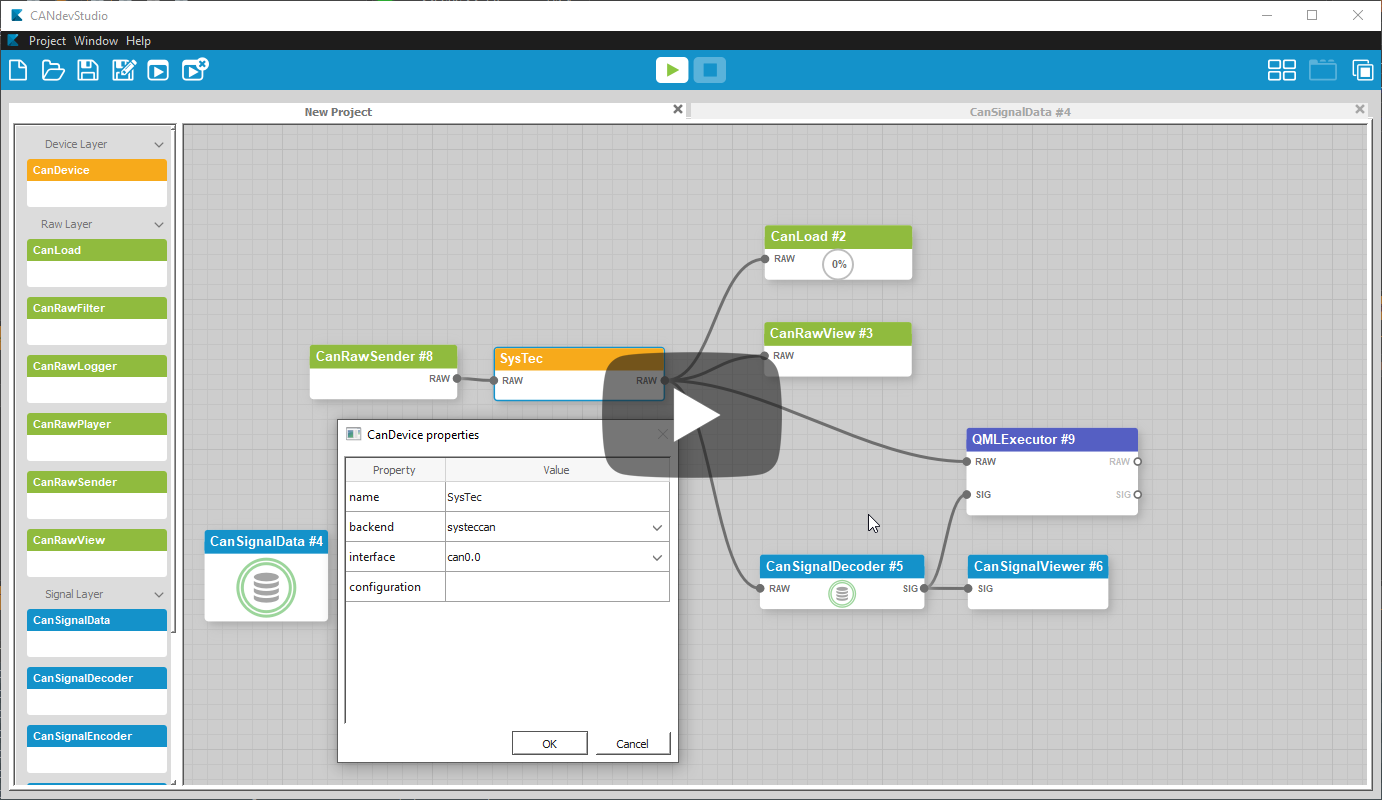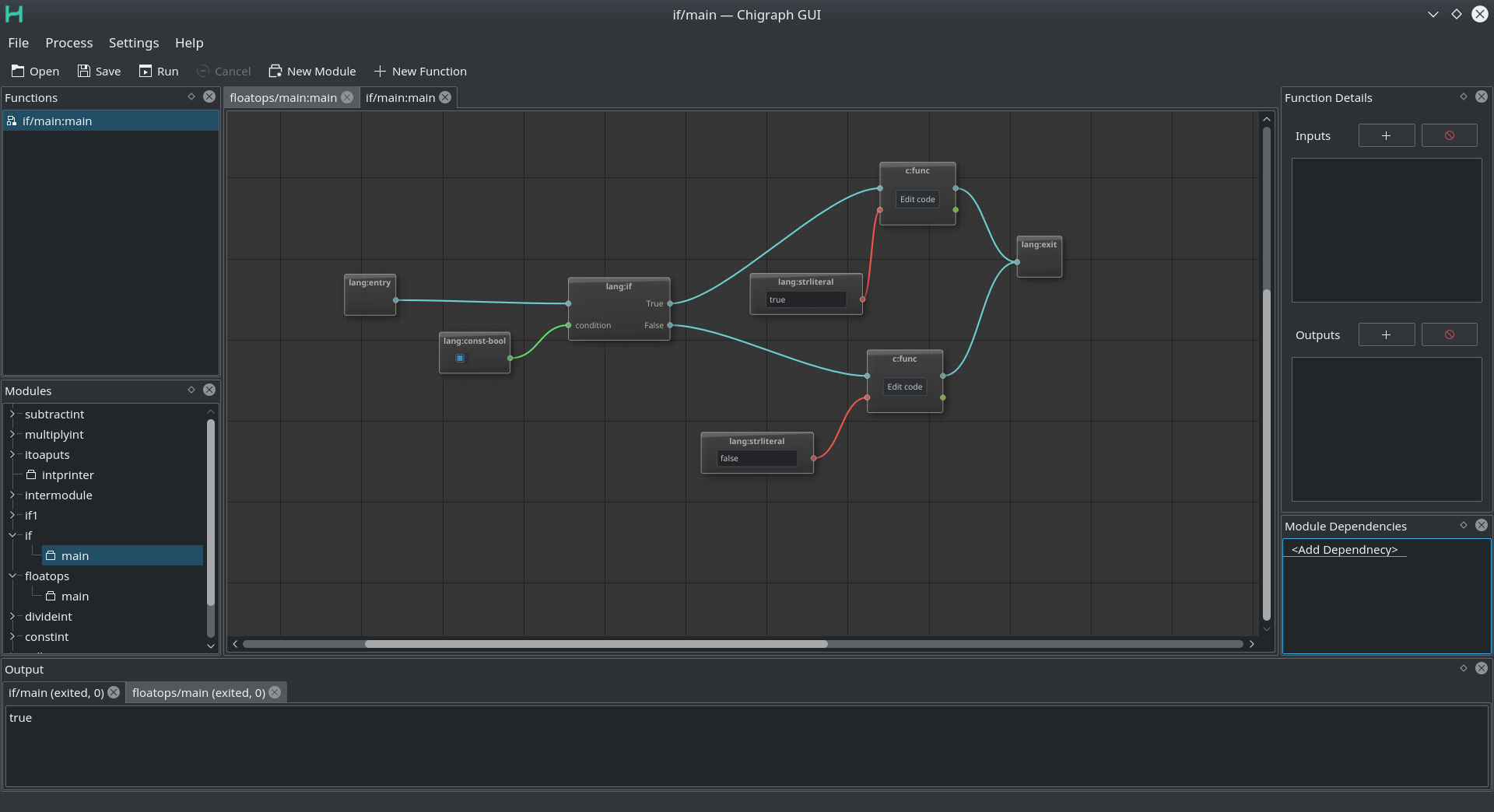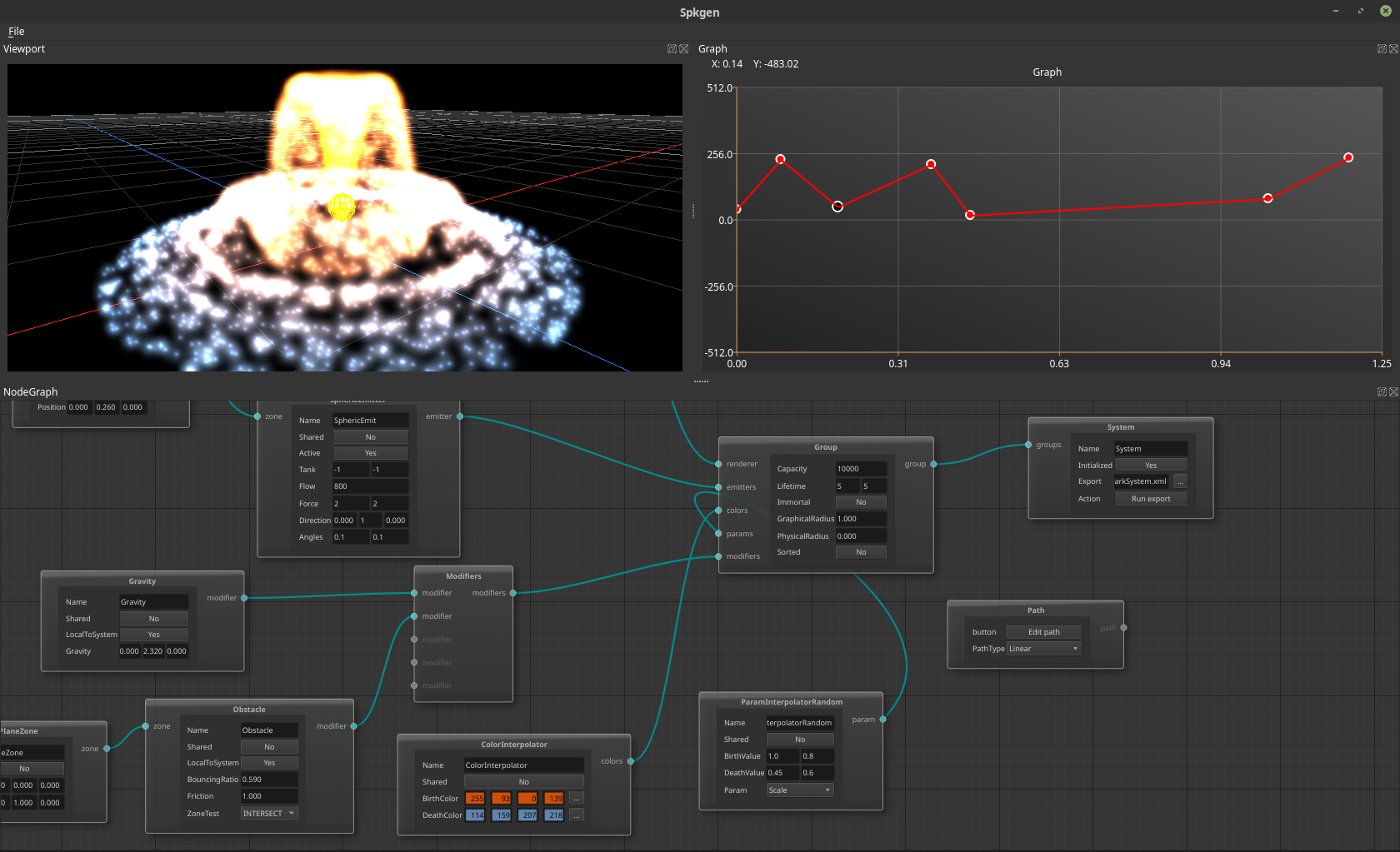https://github.com/paceholder/nodeeditor/actions/workflows/cmake_build.yml/badge.svg
QtNodes is conceived as a general-purpose Qt-based library aimed at developing Node Editors for various applications. The library could be used for simple graph visualization and editing or extended further for using the Dataflow paradigm .
The library is written using the Model-View approach. The whole graph structure is defined by a class derived from AbstractGraphModel. It is possible to create or add Nodes and Connections. The underlying data structures could be of any arbitrary type or representation.
An instance of AbstractGraphModel could or could not be attached to specialized QGraphicsScene and QGraphicsView objects. I.e. the so-called "headless" modus operandi is possible.
- Warning
Many classes were changed in the version
3.0. If you had a large project based on2.x.x, make sure you read the documentation first and see the examples before checking out the new code.
There are branchses v2 and v3 for versions 2.x.x and 3.x respectively. The branch master contains the latest dev state.
Navigation
The extended model class DataFlowGraphModel allows to register "processing algorithms" represented by nodes and is equipped with a set of Qt's signals and slots for propagating the data though the nodes.
The node's algorithm is triggered upon arriving of any new input data. The computed result is propagated to the output connections. Each new connection fetches available data and propagates is further. Each change in the source node is immediately propagated through all the connections updating the whole graph.
- Linux (x64, gcc, Qt 5.15.2)
- OSX (Apple Clang, Qt 5.15.2)
- Windows (MSVC, Qt 5.15.2)
- Windows (MSVC, Qt 6.3.0)
- Qt >5.15
- CMake 3.8
- Catch2
- Model-based graph
- Headless mode You can create, populate, modify the derivative of
AbstractGraphModelwithout adding it to the actual Flow Scene. The library is now designed to be general-purpose graph visualization and modification tool, without specialization on only data propagation. - Automatic data propagation built on top of the graph-model code The library could be used for both pure graph visualization purposes and for originally implemented data propagation.
- Dynamic ports
- Datatype-aware connections
- Embedded Qt widgets
- One-output to many-input connections
- JSON-based interface styles
- Saving scenes to JSON files
- Custom Node Geometry
- Vertical and Horizontal graph layouts
- Undo/Redo, Duplication (CTRL+D)
Set this option to false if you want to build with Qt5 version instead of Qt6:
USE_QT6
mkdir build && cd build && cmake .. -DUSE_QT6=on
or
mkdir build && cd build && cmake .. -DUSE_QT6=offgit clone git@github.com:paceholder/nodeeditor.git
cd nodeeditor
mkdir build
cd build
cmake ..
make -j && make install- Open CMakeLists.txt as project.
- If you don't have the Catch2 library installed, go to Build Settings, disable the checkbox BUILD_TESTING.
- Build -> Run CMake
- Build -> Build All
- Click the button Run
- Install vcpkg
- Add the following flag in configuration step of CMake
-DCMAKE_TOOLCHAIN_FILE=<vcpkg_dir>/scripts/buildsystems/scripts/buildsystems/vcpkg.cmake- Python wrappring using PySide.
- QML frontend.
- Wirting a ClangFormat config.
Any suggestions are welcome!
- Be polite, respectful and collaborative.
- For submitting a bug:
- Describe your environment (Qt version, compiler, OS etc)
- Describe steps to reproduce the issue
- For submitting a pull request:
- Create a proposal task first. We can come up with a better design together.
- Create a pull-request. If applicable, create a simple example for your problem, describe the changes in details, provide use cases.
- For submitting a development request:
- Describe your issue in details
- Provide some use cases.
- I maintain this probject in my free time, when I am not busy with my work or my family. If I do not react or do not answer for too long, please ping me.
Dmitry Pinaev et al, Qt Nodes, (2022), GitHub repository, https://github.com/paceholder/nodeeditorBibTeX:
@misc{Pinaev2022,
author = {Dmitry Pinaev et al},
title = {QtNodes. Node Editor},
year = {2017},
publisher = {GitHub},
journal = {GitHub repository},
howpublished = {\url{https://github.com/paceholder/nodeeditor}},
commit = {877ddb8c447a7a061a5022e9956a3194132e3dd9}
}If you like the project you could donate me on PayPal 
If you send more than $100, I'll forward $100 to some fund supporting sick children and report to you back.
The version 3 was released with a generous help of Davide Faconti
CANdevStudio is a cost-effective, cross-platform replacement for CAN simulation software. CANdevStudio enables to simulate CAN signals such as ignition status, doors status or reverse gear by every automotive developer. Thanks to modularity it is easy to implement new, custom features.
Chigraph is a visual programming language for beginners that is unique in that it is an intuitive flow graph:
It features easy bindings to C/C++, package management, and a cool interface.
Spkgen is an editor for the SPARK particles engine that uses a node-based interface to create particles effects for games




